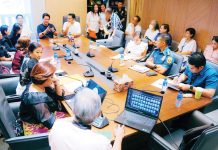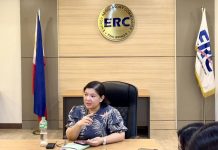[av_one_full first min_height=” vertical_alignment=” space=” custom_margin=” margin=’0px’ padding=’0px’ border=” border_color=” radius=’0px’ background_color=” src=” background_position=’top left’ background_repeat=’no-repeat’ animation=”]
[av_heading heading=’Awareness of ICT tools in modern agriculture’ tag=’h3′ style=’blockquote modern-quote’ size=” subheading_active=’subheading_below’ subheading_size=’15’ padding=’10’ color=” custom_font=”]
BY JULIO P. YAP JR.
[/av_heading]
[av_textblock size=” font_color=” color=”]
ABOUT half of current farmers in the country are likely to retire in the next decade. This will definitely leave a large gap for the next generation to fill.
Authorities should know that young farmers are the key to the future of agriculture in the country.
The national government, as well as local government units, should start supporting policies which will make farming a viable option for the youth who will be starting out.
Proper knowledge and exposure to farm life will help invest future generations in local agriculture.
One strategy to attract the youth to venture in rice farming is to strengthen their awareness of the latest information and communication technology (ICT) tools in modern agriculture.
Because of this, ICT experts recently gathered at the Philippine Rice Research Institute (PhilRice) to inspire more than a hundred graduating students from five universities to venture in agricultural ICT.
The 3rd Agrihackathon Symposium showcased the full utilization of ICT in agriculture.
“Where else can we find the next noble ideas and ICT innovations in agriculture than in our youth,” said Dr. Flordeliza Bordey, PhilRice deputy executive director for development.
“We are encouraging IT students to produce a number of ICT tools to speed up the modernization of rice farming in our country,” Bordey added.
The guest speaker, Engineer Franch Maverick Lorilla from CloudFarm Innovations, an agri-tech company in Davao City, also discussed business startups on agricultural ICT.
“We can be techno-preneurs and create machinery, software, applications, sensors, knowledge banks, and many other tools to help our farmers,” Lorilla explained.
The participants also learned about the existing ICT tools used by PhilRice such as the PhilRice Text Center, Pinoy Rice Knowledge Bank (PRKB), Rice Crop Manager (RCM), Minus One Element Technique App (MOET), Philippine Rice Information System (PRISM), and the Rice Doctor diagnostic tool app.
“I appreciate that there are already existing ICT tools to help our farmers. I feel motivated since future ICT practitioners like us have the potential to contribute in advancing the agriculture sector in our country,” said Carl Angelo Dallo, a student from Central Luzon State University (CLSU).
Infrared imagery, vertical farming, hydroponics, drones, and satellite farming, are among the modern ICT tools for agriculture.
Drones are used in rice farming for research activities such as data collection, tracking growth patterns, and pest and nutrient management.
Vertical farming and hydroponics, on the other hand, are used to produce crops without relying on favorable weather, high soil fertility or high water usage.
Infrared imagery helps researchers in analyzing rice leaf nitrogen.
This versatile technology, known to analyze data in less than a minute, has potential for soil, chemical, and grain quality analysis.
Satellite farming is used for yield mapping, monitoring, crop health assessment, and damage assessment during calamities.
It provides a continual source of information, regardless of weather conditions.
Aside from CLSU, the student participants came from the Pampanga State Agricultural University, Nueva Ecija University of Science and Technology, College for Research and Technology in Cabanatuan, and Pangasinan State University./PN
[/av_textblock]
[/av_one_full]







